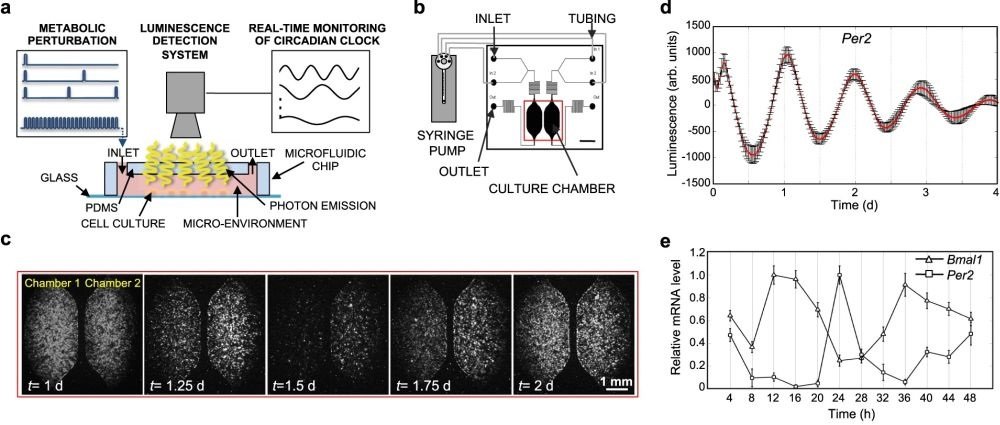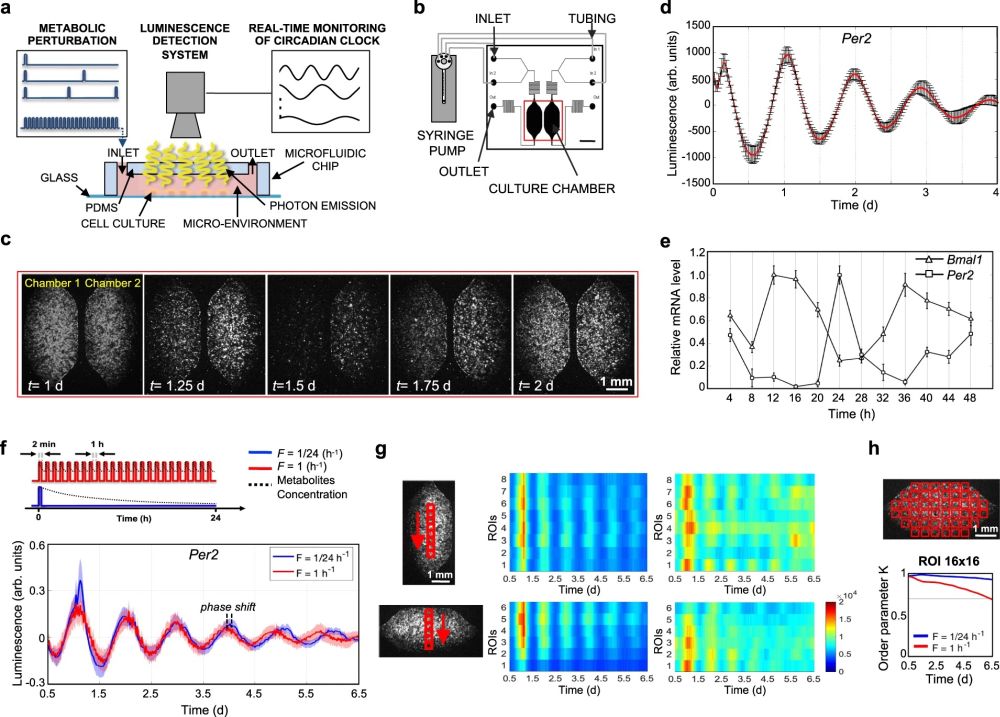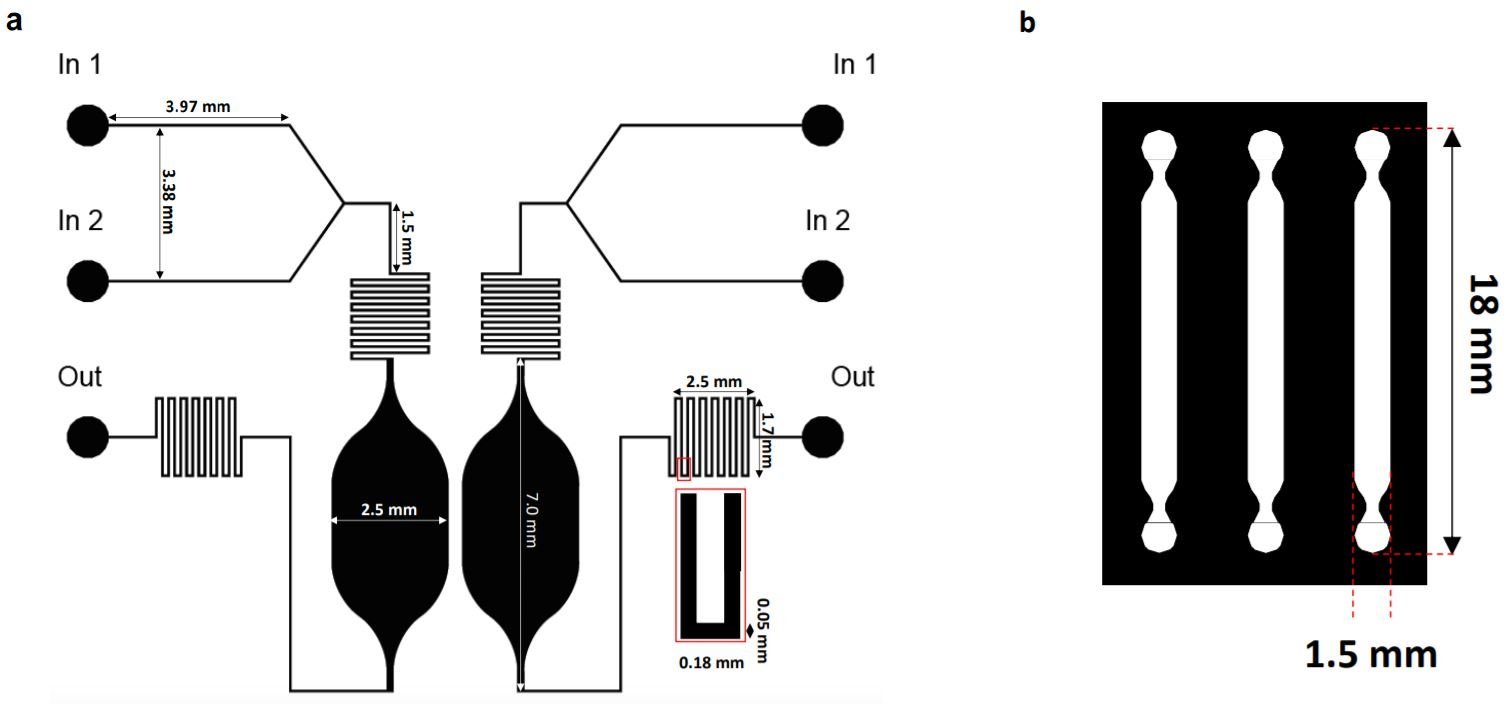
06 Nov Circadian study of mammalian cell cultures using microfluidics technology
The circadian rhythm regulates many of the processes in the body and is crucial for general health. Dysfunctions in the circadian rhythm can be a risk factor leading to developing disorders including metabolic disorders. In this week’s research highlight, we will introduce a recent article published in the Nature Communication journal where a research team reports a simple and user-friendly microfluidic chip that can be used for circadian rhythm study of mammalian cells in a microfluidic environment.
“We take advantage of microfluidic technology to perform periodic cyclic stimulations37,38 under controlled microenvironment conditions. The characteristic micrometric dimension of microfluidics supports laminar flow, which results in highly reproducible mass transport condition, accurate spatio-temporal control of the concentration of solute over a cell monolayer, and fast change of medium volume, typically of few microliters. “, the authors explained.

Reproduced from Gagliano, O., Luni, C., Li, Y. et al. Nat Commun 12, 6185 (2021) under Creative Commons Attribution 4.0 International License.
The working mechanism of the microfluidic device
Two PDMS microfluidic devices were microfabricated for this research. The first microfluidic device consists of two separate microchambers each connected to two inlets and an outlet. The microchambers had a volume of 1.75 µL for cell culture. The inlets were connected to syringe pumps for controlling the flow of the media. The syringe pump was controlled using a customized code to adjust the flow rate, duration of perfusion, and the cycles. The microfluidic device was then placed under a temperature-controlled microscope for luminescence signal measurement. The second microfluidic device was designed for high-content luminescence signal and includes three parallel microchambers for imaging with a slightly larger chamber volume (2.7 µL).

Reproduced from Gagliano, O., Luni, C., Li, Y. et al. Nat Commun 12, 6185 (2021) under Creative Commons Attribution 4.0 International License.
Both of the microfluidic chips were autoclaved before use followed by a fibronectin coating. Cells were seeded at a density of 600 cell/mm2 which resulted in confluency the day after the seeding. Three protocols were employed to induce circadian rhythm entrainment. One was based on a dexamethasone shock. In the other protocols, the cells were treated with a serum shock and two media with different contents of glucose and insulin. The cells were lysed and the collected mRNA samples from the microfluidic devices were used for RT-PCR.
“In conclusion, the data presented here identify microfluidics as a promising and crucial technology for future studies of dynamic processes offering a new perspective of study in the circadian field. Our results corroborate several observations of the implication between metabolism and clock and provide additional evidence that alignment and misalignment between cell-autonomous clock and the feeding-fasting cycles can provide not only alteration on the clock but also in other functions.“, the authors concluded.
Figures are reproduced from Gagliano, O., Luni, C., Li, Y. et al. Synchronization between peripheral circadian clock and feeding-fasting cycles in microfluidic device sustains oscillatory pattern of transcriptome. Nat Commun 12, 6185 (2021). under Creative Commons Attribution 4.0 International License
Read the original article: Synchronization between peripheral circadian clock and feeding-fasting cycles in microfluidic device sustains oscillatory pattern of transcriptome


